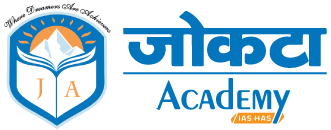
One Nation, One Election: Advantages, Challenges, and Its Impact on India’s Democracy
The Indian government has taken a significant
step towards revolutionizing the country’s electoral process by approving the
‘One Nation, One Election’ policy. This historic decision, aimed at
synchronizing Lok Sabha and state assembly elections, was made at a Union
Cabinet meeting chaired by Prime Minister Narendra Modi. The draft legislation
is set to be introduced in the ongoing Winter session of Parliament, marking a
potential shift in India’s democratic framework.
What is the
One Nation, One Election Policy?
The ‘One Nation, One Election’ (ONOE) policy
proposes holding simultaneous elections for the Lok Sabha and state assemblies.
Under this framework, voters across the country will elect both central and
state representatives in the same electoral cycle. Currently, only a few states
like Andhra Pradesh, Odisha, and Sikkim align their elections with the Lok
Sabha polls. The majority follow a separate five-year schedule, leading to
frequent elections throughout the year.
This policy aims to alleviate the economic,
social, and political challenges posed by recurring elections and streamline
governance.
The Vision
Behind ONOE
To pave the way for simultaneous elections,
the government formed a high-level committee in September 2024, chaired by
former President Ram Nath Kovind. This committee undertook extensive nationwide
consultations and made 11 key recommendations to facilitate the implementation
of the ONOE policy.
Key
Recommendations of the One Nation, One Election Panel
- Mitigating Frequent Elections: The
committee highlighted the adverse impact of frequent elections on the
economy, polity, and society, advocating for synchronized polls to reduce
disruptions. - Phased Implementation:
- Phase 1: Align Lok Sabha and
state assembly elections. - Phase 2: Synchronize municipal
and panchayat polls within 100 days. - Appointed Date for Synchronization: The President may declare an ‘appointed date’ for the Lok Sabha’s
commencement post-elections, ensuring long-term synchronization. - Adjusting Assembly Terms:
Newly-formed state assemblies may have shortened terms to align with the
next Lok Sabha elections. - Implementation Group: A
dedicated body will oversee the execution of the ONOE reforms. - Unified Electoral System:
- Introduction of Article 324A to facilitate simultaneous
elections. - Amendment to Article 325 to create a unified voter roll and
photo ID system for all elections. - Handling Hung Houses: In
the case of a hung house or no-confidence motion: - Fresh elections will be held.
- The newly elected Lok Sabha or assembly will serve only the
remaining term of the previous one. - Proactive Planning: The
Election Commission must prepare in advance by procuring sufficient
Electronic Voting Machines (EVMs) and Voter Verifiable Paper Audit Trail
(VVPAT) systems.
Potential
Benefits of ONOE
- Financial Savings
- Simultaneous elections can drastically reduce costs incurred by
the public exchequer and political parties on multiple election
campaigns. - For instance, the 2019 Lok Sabha elections alone cost
approximately ₹60,000 crore. By synchronizing elections, these expenses
could be reduced significantly. - Logistical Efficiency
- Frequent elections require repeated deployment of poll officials,
security forces, and resources. ONOE would streamline this, concentrating
resources on a single election cycle every five years. - Governance Continuity
- Recurring elections often place governments in “election
mode,” delaying policy implementation and decision-making.
Simultaneous polls would allow governments to focus on governance without
constant electoral disruptions. - Increased Voter Turnout
- Holding national and state elections together could encourage
higher voter participation. Voters would have the convenience of casting
ballots for multiple levels of government on the same day, reducing voter
fatigue. - Unified Electoral System
- A unified voter roll and ID system, as proposed, would enhance the
credibility and transparency of elections, reducing duplication and
errors.
Challenges
and Criticisms of ONOE
Despite its potential benefits, the ONOE
proposal faces significant hurdles that must be addressed for successful
implementation.
- Constitutional and Legal Amendments
- Implementing ONOE requires amending key articles of the
Constitution, including Articles 83, 85, 172, 174, and 356, which govern
the terms and dissolution of legislatures. - The Representation of People’s Act, 1951, will also need
modifications to align electoral schedules. Achieving consensus for these
changes, including approval from at least half of India’s states, will be
a complex process. - Logistical Hurdles
- Managing simultaneous elections in a country with over 900 million
eligible voters poses significant challenges. Ensuring the availability
of sufficient Electronic Voting Machines (EVMs) and Voter Verifiable
Paper Audit Trail (VVPAT) systems, along with coordinating election
personnel and security forces, will require meticulous planning and
unprecedented resource mobilization. - Potential Impact on Local Issues
- Critics argue that state-level issues could be overshadowed by
national narratives during simultaneous elections, leading to voter
disconnect and centralization of power. This is a major concern for
regional parties, who fear losing their voice in a nationally dominated
discourse. - Handling Early Dissolution
- Dealing with scenarios where a government (state or central)
dissolves before its term ends remains a challenge. The proposal suggests
that newly elected assemblies or parliaments serve only the remaining
term of the original tenure, but implementing this fairly could be
contentious. - Recurring Costs of EVMs
- The Election Commission estimates a recurring cost of
approximately ₹10,000 crore every 15 years for the procurement and
maintenance of EVMs and VVPATs for synchronized elections. - Opposition Concerns
- Several opposition parties, including Congress and AAP, have
criticized ONOE as a potential threat to India’s federal structure,
calling it “undemocratic.”
Public
Opinion on ONOE
The high-level committee chaired by former
President Ram Nath Kovind has received over 21,000 suggestions regarding ONOE,
with more than 81% of respondents supporting the policy. Proponents highlight
its potential to bring cost efficiency, reduce electoral fatigue, and enhance
governance continuity. However, ensuring constitutional validity and addressing
concerns raised by opposition parties and regional stakeholders remain crucial.
Way Forward
The government’s decision to proceed with the
ONOE policy underscores its commitment to transformative governance. If
successfully implemented, this move has the potential to redefine the electoral
landscape, promoting efficiency, reducing disruptions, and fostering a stable
political environment.
As the bill moves to Parliament, it is
imperative to build consensus among political parties and states to ensure the
policy’s successful rollout. This landmark reform could mark the beginning of a
new chapter in India’s democracy, benefiting citizens and governance alike.
Conclusion
The ‘One Nation, One Election’ policy is more
than a procedural reform—it is a visionary approach to streamline India’s
electoral processes and governance. While its implementation will require
overcoming substantial challenges, the potential benefits make it a worthy
endeavor for the world’s largest democracy.
Post a Comment
You must be logged in to post a comment.



